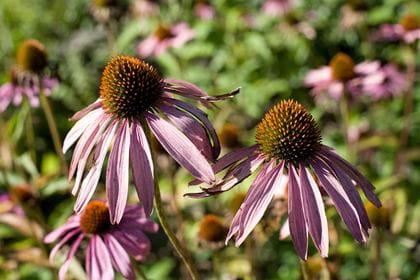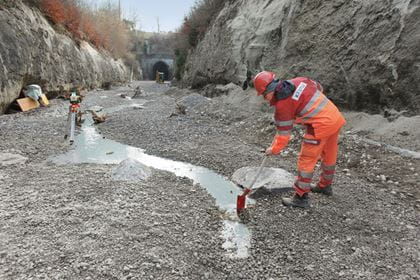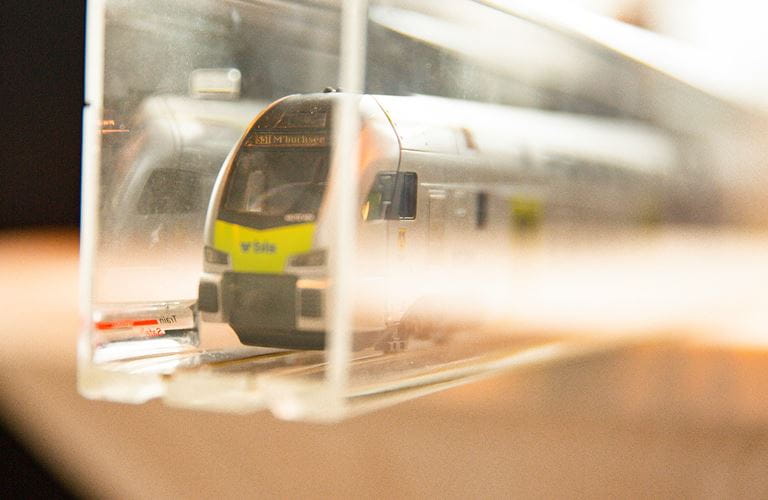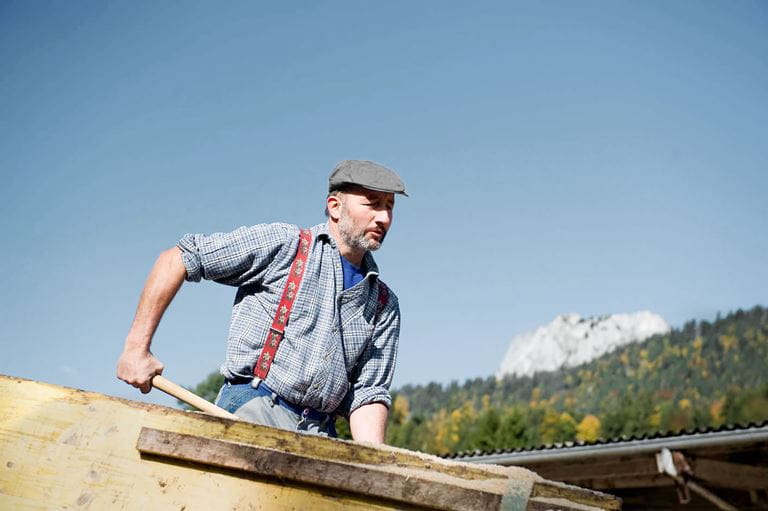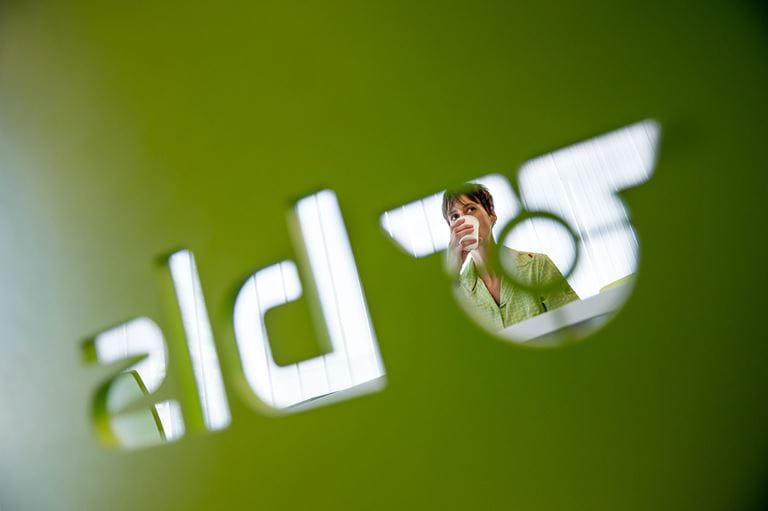Climate and environment
BLS wants to use its resources sustainably and achieve net-zero emissions by 2050 at the latest.
It is therefore implementing environmentally friendly measures at various levels of impact and adapting to the consequences of climate change: it maintains green spaces in a natural way, thereby promoting biodiversity, trains its employees in the implementation of the circular economy, and establishes comprehensive energy monitoring with corresponding energy efficiency targets at the two impact levels of buildings and vehicles.

Greenhouse gas balance
BLS aims to continuously improve its climate and environmental footprint and achieve net-zero CO2 emissions by 2050. Specifically, BLS is pursuing the following milestones:
- Net Zero Scope 1 & 2 emissions in Switzerland by 2040 (in shipping by 2050)
- Net Zero Scope 1 & 2 emissions abroad by 2045
- Net Zero Scope 3 emissions by 2050
BLS carried out a comprehensive greenhouse gas balance for the base year 2022 and the reporting year 2023 in order to measure the development of emissions. The biggest drivers of emissions at BLS include the fuel consumption of its own vehicles, the purchase of energy by its foreign subsidiaries and the procurement of multiple-unit trains and locomotives. Purchasing energy within Switzerland is more environmentally friendly: With hydropower accounting for more than 95 per cent of the electricity used to drive our trains, BLS makes a key contribution to climate protection.
Energy efficiency
Increasing energy efficiency is a major priority at BLS. BLS is exploiting potential savings by improving the heating, cooling and lighting on existing trains, setting high energy efficiency standards for new fleets, and raising train drivers’ awareness of the responsible use of energy.
BLS is aware of its pioneering role and joined the federal government's "Exemplary Energy and Climate" (EEC) initiative together with other providers of publicly relevant services in autumn 2023. The stakeholders defined 15 joint and other individual goals and measures to promote energy efficiency and renewable energies. This is seen as a contribution to the Energy Strategy 2050 and the Paris Climate Agreement of 2015.
Waste and recycling
Our customers only feel at home on clean trains, buses and boats, and at well-maintained train stations, stops and boat landings. This is why over 100 employees collect and clean several hundred tonnes of paper, PET, aluminium and other waste from vehicles, boats and public facilities every year.
By far the greatest volume of waste, however, is generated during the construction and maintenance of the railway infrastructure and vehicle maintenance. Our group-wide waste disposal manual lays out a professional approach to the collecting and storing of materials such as railroad ballast, sleepers, hazardous waste and metals. We use external, certified environmentally friendly service providers to recycle materials.
Biodiversity
The environment is anchored in BLS's corporate strategy as one of five strategic directions. In order to achieve the strategic environmental goals, BLS promotes biodiversity in particular. The dense railway network is a burden on animal and plant habitats, but the railway also provides a valuable ecological habitat for flora and fauna thanks to the embankments, hedges and forests along the tracks.
BLS is implementing various measures to this end:
- Construction projects at BLS are supported by environmental specialists. During the construction of the new Rosshäusern tunnel, for example, a stream in the immediate vicinity was renaturalised to create a habitat for animals.
- BLS also wants to connect and improve the habitats of large and small animals with wildlife corridors and passages. To reduce the barrier effect of railway lines, BLS is therefore removing dilapidated or no longer used fences.
- BLS wants to maintain its green spaces in a way that is as close to nature as possible. In line with the FOT's requirements, BLS will design and maintain at least 20 per cent of its green spaces in a near-natural state by the end of 2024. With its sustainability strategy, BLS has raised the target to 30 per cent.
- To reduce the risk of electrocution for birds, especially those with large wingspans, BLS is refurbishing its catenary masts and dispensing with certain particularly high-risk types of insulators.
- In addition, the use of pesticides is to be reduced as much as possible. BLS employees carry out chemical vegetation control and only spray selectively and where absolutely necessary. Together with other Swiss infrastructure operators, BLS is involved in the FOT's "Glyphosate Alternatives" research project.
- Finally, BLS maintenance staff consistently and successfully combat invasive neophytes in order to preserve biodiversity.
Protective forest
Above the Lötschberg south ramp, BLS operates a protective forest that protects the railway line from natural hazards such as rockfalls, avalanches and landslides. However, the dry conditions caused by climate change are increasingly affecting the forest, and without human intervention the forest will probably not be able to adapt sufficiently to continue to fulfil its protective function. To make the forest more resilient, BLS is increasing the diversity of tree species and reducing irrigation in certain sections of the forest during a first step, ideally with a view to phasing it out in the long term. This will allow BLS to monitor the effects of different conditions over a prolonged period and, at the same time, minimise the risk of a total failure of the protective forest.
